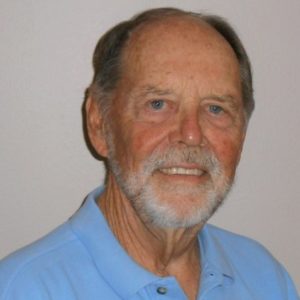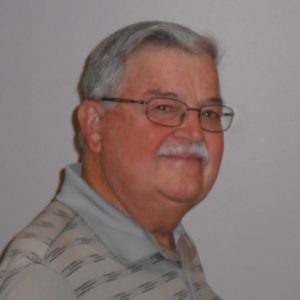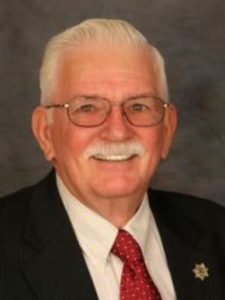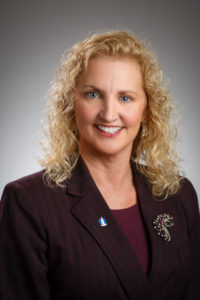October 2021
Honoring Yesterday – Protecting Tomorrow
Vol. 52, No. 10
WHAT’S INSIDE?
RESDC Virtual Health Fair
President’s Message
Pension Facts
Skip Murphy Guest Columnist
RESDC Open Enrollment
Virtual Alzheimer’s & Other Dementias
Public Pension Funded
Health Care Legislation
SDCERA’s Open Enrollment
Walk4ALZ San Diego
Virtual Nationwide Deferred Compensation
Recent Events
SDCERA Administrative Fee Increase
Purchase See’s Gift Cards Online
Regulations for Medical Billings
Save the Date Holiday Fest
In Memoriam
Welcome New Members
October Calendar of Events
12—(Tues.) Virtual RESDC Presentation
Alzheimer’s Disease and Other Dementias
Online Zoom Meeting Room, 10:00 a.m.
14—(Thurs.) RESDC Board of Directors Meeting
Via Zoom Web Conferencing, 9:30 a.m.
16—(Sat.) Walk4ALZ San Diego
Balboa Park, 8:00 a.m.
21—(Thurs.) SDCERA Board of Retirement Meeting
22—(Fri.) Virtual RESDC Presentation
Nationwide: Deferred Compensation Program
Online Zoom Meeting Room, 10:00 a.m.
28—(Thurs.) RESDC Virtual Health Fair, 10:00 a.m.
Via Zoom Web Conferencing.
View the NETWORK
as a printable PDF
Are you on social media?
Stay connected with us!
![]()
![]()
QUOTE OF THE MONTH
The person who says it cannot be done should not interrupt the person who is doing it.
▪ Chinese Proverb
RESDC VIRTUAL HEALTH FAIR
THURSDAY, OCTOBER 28, 2021 AT 10:00 AM
VIA ZOOM WEB CONFERENCING
Due to ongoing issues related to the COVID-19 pandemic, we will not be hosting our Health Fair Picnic this Fall. However, we are excited to be hosting our second virtual health fair on October 28th at 10 a.m.
Our first presenter will be from Pacific Group Agencies and will present 2022 RESDC sponsored group benefit highlights of the annual enrollment period. Greg Margulies will provide specific answers to many of the most frequently asked questions. Additionally, the special menu of the other Group Benefit Programs will also be highlighted. For more information on RESDC member benefits, visit us at: www.resdc.net/member-benefits/ . Click here for more information on RESDC benefits.
Mary Ball, SDCERA Chief of Operations, will highlight the 2022 SDCERA-sponsored Medical and Dental plans that are available for retired members, surviving spouses/registered domestic partners, and eligible dependents. Click here for more information on SDCERA’s open enrollment.
We are pleased to welcome our final presenter, Pete Blasi from My Senior Health Plan. My Senior Health Plan assists individuals who are turning 65 or individuals who are Medicare eligible. They will provide free plan comparisons and help you with the enrollment process right over the phone! Here’s a message from our presenter: “We at MySeniorHealthPlan.com pride ourselves on our ability to provide honest and non-biased comparisons for senior health insurance. We understand there are many variables to consider when looking at the individual market for Medicare insurance, especially when measuring against a group plan you might have been on for years. We understand Medicare and senior health insurance can be confusing and is a very important decision. For this reason, we will never pressure or rush you into selecting a plan, we take our time going over all your options to help you select the right plan for your needs. Our team is committed to providing excellent service not only during the initial enrollment process but for all the years to follow!”
For more details on how to access Zoom and to register for this great event, visit us at: www.resdc.net/events . □
PRESIDENT’S MESSAGE
 RESDC Members;
RESDC Members;
The RESDC President’s Message last month, written in late July and early August, focused on the need for the U.S. Food and Drug Administration to quickly grant final approval for at least one COVID vaccine. Three had been authorized for emergency use based on an emergency rule procedure, emergency rule, extensive testing and effectiveness against the spreading and deadly virus, but no final approvals had been granted.
The Message argued that the COVID Delta variant combined with 92 million still unvaccinated Americans, had led us into another deadly COVID surge, and full FDA approval could encourage about a third of those folks to take the vaccination plunge.
Were we convincing? One might think so if they credited us with the FDA’s almost immediate action. On Monday, August 23rd, full approval was granted to Pfizer-Bio-NTech’s coronavirus vaccine for folks 16 years and older. Hopefully, that anticipatory third of the unvaccinated will take note, and business and government leaders will be more inclined to encourage COVID vaccinations, helping to reverse this fourth surge.
Of course, we are only one of many voices, and a small voice at that speaking to a huge global crisis. We wouldn’t want to take ourselves too seriously. But we’re glad the FDA took action.
This fourth surge has killed more young folks during July and August, roughly tripling deaths for those in their 30’s and ages 18 to 29, according to Centers for Disease Control and Prevention figures published by USA Today. And while folks in their 50’s and early 60’s made up about 17% of victims before this, they represented a quarter of the victims during July and August.
But another newbie has reared its head. The Biden Administration announced on August 18th that folks who received Pfizer or Moderna vaccines would be offered a booster shot about eight months following their second vaccination, with individuals vaccinated earliest in the pandemic, healthcare workers and seniors prioritized. More recent rumors suggest the boosters beginning five months after the second shots, instead of eight months after.
Booster shots are also expected for Johnson and Johnson vaccine recipients if and when more data proves the need.
In their announcement about the boosters, Department of Health and Human Services officials cautioned “ . . COVID-19 vaccines authorized in the United States continue to be remarkably effective in reducing risk of severe disease, hospitalization and death, even against the widely circulating Delta Variant.” Then they added, “Based on our latest assessment, the current (vaccine) protection against severe disease, hospitalization and death could diminish in the months ahead, especially among those who are at higher risk or were vaccinated during the early phases of the vaccination rollout.” “For that reason, we conclude that a booster shot will be needed to maximize vaccine induced protection and prolong its durability.”
The FDA had already authorized third doses for some diagnosed with immunocompromised conditions, about 2.7% of the U.S. population, and a million Americans are estimated to have obtained unauthorized third shots.
The decision to authorize boosters was apparently based on several studies released by the CDC. One found that Pfizer and Moderna’s effectiveness against infections among nursing home residents dropped from 75% to 53% over time with the Delta Virus, and another found that the effectiveness of all three vaccines degraded from 92% to 80% over three months. A third study revealed no significant reduction in effectiveness against hospitalization between mid-March and mid-July.
But the booster announcement wasn’t met with universal applause. While the administration is known to place great importance on staying ahead of the advancing virus, some critics complained that third shots can’t be justified for reasonably healthy vaccinated people, given unmet global needs and limited resources in many countries. They also argue that to accelerate vaccinations in the third world is not just a matter of equal treatment.
The World Health Organization notes that the COVID virus, circulating through millions of unvaccinated people around the globe, greatly increases mutations as it reproduces, and more and possibly more lethal variants which can cycle back into the U.S. population. They believe any unvaccinated people anywhere are a threat everywhere.
We shall see whether the administration’s booster announcement holds against the controversy, and whether third booster shots begin as planned, in mid-September.

PENSION FACTS
Some Retirement Roundup Notes
By Chris Heiserman, Director
 Pension-related news from across the country is available in the series of news clippings we see on a regular basis. Here are summaries of some recent examples.
Pension-related news from across the country is available in the series of news clippings we see on a regular basis. Here are summaries of some recent examples.
Survey Reports Retirement Savings by Generations
According to a survey of 2,000 adults by Northern Mutual’s 2021 Planning and Progress Study, baby boomers (ages 57-75) lead in retirement savings with an average of $102,400 in personal savings and $138,900 in retirement accounts. Millennials (ages 25-40) are in the middle of the generational pack with an average of $51,300 in savings and retirement account balances of $63,300.
Gen Xers (ages 41-56) are slightly ahead of Millennials, averaging $67,100 in personal savings and $98,900 earmarked for retirement. The youngest generation, gen Z (ages 6-24) reportedly average $35,900 in savings and $37,000 saved for retirement.
While the survey found that Americans’ personal savings have increased 10% in the past year, and retirement accounts have bumped up 13%, that apparently does not meet threshold criteria to achieve a “comfortable” future retirement. As reported in a recent CNBC posting, the retirement plan provider Fidelity recommends savings targets in 10-year increments to reach that satisfactory retirement goal. It suggests saving the equivalent of an annual salary by age 30, four times your salary by age 40, six times by 50 and eight times by 60. An example cited in this report would be a member of Gen X earning the median national salary should have $204,000 saved by age 50. According to the survey, Gen Xers only have about half that amount in retirement savings.
On average baby boomers are similarly well behind the recommended Fidelity guidelines for having adequate savings banked by age 60 to support a gratifying retirement. Making matters even more challenging is the fact that many of these workers make much more than the average salary, so their savings targets will be higher.
This is another way of looking at the often-repeated narrative of a retirement savings crisis in America where a large segment of the population will not have the resources to approach their working lifestyle in their retirement years.
Pension Issues in New Jersey, Illinois, Virginia, and California
In a regional review of brief issues assembled by the National Conference of Public Employee Retirement Systems (NCPERS), these four states were highlighted. In July this year New Jersey made a $5.8 billion lump sum payment into its state pension system, signaling a reversal of years of chronic under-funding and skipped contributions to the retirement fund. It is reportedly the first time in 25 years that the state has fulfilled its obligation to the pension plan. New Jersey’s $90 billion retirement fund is also due to get monthly payments from the state’s Lotto throughout the year ($1.1 billion estimate).
Despite wide criticism of Illinois for the woeful performance of its state and local government retirement plans, the state is enjoying positive results for Illinois Secure Choice, an auto-IRA program allowing up to 900,000 private sector workers to save for retirement. According to NCPERS, the savings plan was nearing 100,000 accounts by mid-year and assets of $67 million. Some 6,060 employers had registered for the program and the average monthly contribution was $114.90. The opt out rate for eligible workers at enrolled businesses was about one third.
According to the Richmond-Times Dispatch, assets of the Virginia Retirement Systems (VRS) Trust Fund exceeded $100 billion as of June 30, 2021. The newspaper reported the preliminary estimate of an $18 billion increase in assets representing a 22% rise over the past year. Virginia’s public pension plan is the 18th largest in the nation and funds future benefits for more than 772,000 workers and retirees. Investment income in the fund generates about two-thirds of the dollars to cover those benefits.
The California Public Employees Retirement System (CalPERS), one of the country’s largest public pension plans, saw a 21.3% return on investments in the previous fiscal year, resulting in an $80 billion increase and pushing its portfolio value to $469 billion. The large return driven by the strong stock market triggered the giant plan’s 2015 risk mitigation policy for the first time. If returns exceed the fund’s assumed rate of return (7%) by two or more percentage points, the assumed rate is supposed to automatically be lowered, with costs rising to cover the adjustment. The rationale behind the policy is to lessen the impact of future market downturns; however, the magnitude of this increase is causing the CalPERS Board to take time to review possible changes in the assumed discount rate.
COLAs AWOL in More Than 30 States
According to Anna Petrini, an analyst for the National Conference of State Legislatures, since 2009 more than 30 states have suspended, reduced, or erased cost-of-living adjustments (COLAs) for public sector retirees. In testimony recently before a Pennsylvania state legislative subcommittee, Petrini said the reason was the expense of the benefit. She cited a study calculating that a 3% compounded COLA could add 26% to the overall pension costs of an average retirement.
Apparently, the last COLA awarded to Pennsylvania retirees in the two statewide public pension plans was in 2002. It was reported that legislative efforts over the years to address requests for adjustments due to inflation have failed due to cost considerations. Both pension systems are underfunded (below 60%) while the national median funding ratio for public retirement plans is 72%, according to the National Association of State Retirement Administrators. □
I REALLY DO EXIST!
By Skip Murphy, Retiree Member, SDCERA Board of Retirement
 Well, it has been some time since I wrote an article for THE NETWORK. It’s not because I don’t care to, but rather your RESDC leadership seems to keep you all well advised on what is going on, and my writings would only be duplicative.
Well, it has been some time since I wrote an article for THE NETWORK. It’s not because I don’t care to, but rather your RESDC leadership seems to keep you all well advised on what is going on, and my writings would only be duplicative.
But it was time to let you all know that I do really exist and that I am working on behalf of all the retired members to ensure that your pensions system is secure and will be so for some time to come.
Recently there was an article here written by SDCERA’s Chief Executive Officer, Tracy Sandoval. She outlined several initiatives that were in the works and why and how they will benefit the RESDC membership, as well as all members of SDCERA. Tracy should be no stranger to you, since she has a long history as a county employee, most recently with the County CAO’s office. She attended nearly every SDCERA board meeting confirming the mutual interest between SDCERA and the County.
While she hit on several items that will enhance member services, I want to reinforce the fact that these items have the backing of the entire Board of Retirement. The Board is committed to making the interaction between all the members, both active and retired, as smooth and informative as possible. We also want to ensure you that the entire SDCERA staff is committed to work with you in a timely fashion to answer questions, sort out problems and get you what you need to have the confidence that SDCERA and the fund is a solid, well-run organization that will protect your future.
We have all watched the news and heard about how the economy is rising and investments are climbing. Well, it is also true with our fund. Chief Investment Officer Steve Sexauer and Deputy Investment Officer Tom Williams are looking at our investment portfolio every day. They discuss the “good and bad” of what is going on in the global investment world. Their expertise in recommending the asset allocation and the movement of investment funds within the portfolio for the maximum benefit is outstanding.
The investment philosophy of both the Board and the investment staff is to protect the principal of the portfolio. While the asset allocation may seem somewhat conservative to some, it was designed to balance and protect the fund in the up markets and the down markets. The knowledge and ability of investment staff has capitalized on the major uptick in the markets, and they have moved gains into categories to ensure that the stability continues. This will ensure that investment losses in some categories should be offset by the gains or stability of other categories. Granted, there are no guarantees when catastrophes hit, but work of the investment staff will do everything they can to protect the fund.
Yes, that will ensure that you get your check every month, and for most of us that is what we are concerned about. But the other side of the coin is the Member Services area where members have issues that impact their current or future pension payments. When you have such an issue, you can either call or email the Member Services staff and they will get back with you. This could be problems with disability, withholding, prior service, reciprocity (work with another agency system), divorce, or death. There are experts in each category that will be designated to help you out. The feedback I have gotten from those who chose to call me, and I have referred to staff has always been positive.
There are so many SDCERA staff members behind the scenes that you probably will never encounter. The Call Center personnel, the Member Processing staff, the Disability Review staff, the Accounting staff, the Internal Audit staff, the HR staff, the Administrative staff all excellently do their tasks day in and day out to make certain that the retirement system operates as it should – on behalf of you, the member.
The context of this article can be simply summed up as this: your retirement system is well run, well-funded, and will be there for your future.
In closing let me thank you for electing me as your Retiree Representative on the Board. With the added input from Susan Mallett, the Alternate Retiree Representative, your issues are considered, and we will make certain that your check comes in month after month after month. □
OPEN ENROLLMENT FOR RESDC BENEFIT PLANS
Dental, Vision, ID Shield, Legal, Pet, Travel, Accident, & More
The 2022 Open Enrollment is fast approaching. During the first half of October, you should receive your 2022 RESDC Benefits Guide. This guide lists the benefit plans available exclusively to RESDC members. Plans available include two extremely high benefit level dental plans, two vision plans, legal services, identity protection, pet coverages, travel, accident, hearing aids, and more.
For members interested in enrolling, the deadline is November 12th. Once you receive your benefits packet, please don’t delay. The deadline for dental enrollments is strictly enforced. If you are currently enrolled in any of the RESDC benefit plans, your coverage will automatically continue for 2022. If you are not making changes to your coverage, you do not need to complete the enrollment form as your benefits will automatically continue.
At the virtual RESDC Health Fair, on Thursday, October 28th, our benefit plans administrator, Pacific Group Agencies, will be in attendance and will be able to answer your questions. You may also call Pacific Group Agencies for more information about the 2022 RESDC benefit plans (800) 511-9065. □
VIRTUAL RESDC PRESENTATION
COUNTY OF SAN DIEGO, AGING & INDEPENDENCE SERVICES
Tuesday, October 12, 2021 at 10:00 am
Alzheimer’s Disease and Other Dementias
When: Tuesday, October 12, 2021 at 10:00 a.m. Where: Online Zoom Meeting Room

Matthew Parcasio
Program: This presentation, Alzheimer’s Disease and Other Dementias, is an engaging presentation that provides an overview of the first signs of Alzheimer’s disease and other dementias. This program includes tips and tools for caregivers.
The presenter, Matthew Parcasio, M.A. Gerontology is an Outreach and Education staff member of the Health and Community Engagement Team at the County of San Diego, Health and Human Services Agency, Aging and Independence Services. Matthew gained his in-depth knowledge of caring for cognitive and memory impaired persons through his extensive professional experience in Adult Day Healthcare, Assisted Living Memory Care, and Non-Medical Home Care settings. He expresses his passion for helping others in the support, education, and resources he provides older adults, dependent adults, and their families in San Diego.
RSVP: To learn more about this presentation, including registration, visit: www.resdc.net/events or you can call our office at 619-688-9229. □
PUBLIC PENSION FUNDED LEVEL RISES TO HIGHEST LEVEL
The 100 largest U.S. public pension plans are now 82.6% funded, according to the “Milliman 100 Public Pension Funding Index,” reported by “Pensions and Investments.” This is the highest funded ratio ever reported by the Index.
For the 12 months ending June 30, 2021, the annual return was 20%, a banner year for public pensions, according to Rebecca Sielman, principal at Milliman and author of the Index. She went on to predict, however, how the pandemic will be soon be seen to affect benefit accruals, pay levels and contributions to the various plans, reports “Pensions and Investments”.
Of the 100 plans in the Index, 39 were reported to have funded ratios above 90%, and 17 remained below 60%, nine plans reported ratios between 60% and 70%, 14 plans were between 70% and 80% and 21 were between 80% and 90% funded.
As a result of this banner year for public retirement investments, estimated assets of the public retirement funds in the Index rose to $4.62 trillion, from $4.39 trillion, or $230 billion, as of March 31st, “Pensions and Investments” reports.
The funded ratio for the San Diego County retirement plan (SDCERA) by June 30, 2021, which was 77.3% on June 30 2020, has not yet been reported. That preliminary figure is expected to be released about December, in the “SDCERA Actuarial Valuation and Review as of June 30, 21,” currently being developed. It is expected to be considerably higher, given the last year’s bull market. □
WHY IS IT SO HARD TO GET HEALTH CARE LEGISLATION THAT SAVES. . .?
Annelise Capossela, of AXIOS, asks, “Why is it so hard to get health care legislation that saves American’s money?” She answers her own question in three terse sentences:
Jan-June 2021 – Top 20 Lobbyists Spending, from Open Secrets/Senate Records.
Pharmaceutical Research and Manufacturers of America- $15,218,000.
American Hospital Association- $12,121,176.
“Enough said.” □
SDCERA’S OPEN ENROLLMENT
SDCERA’s Open Enrollment period happens in November and is a passive enrollment, meaning that if you are happy with your current plan coverage, you do not need to take any action and your plan will automatically renew for the next plan year.
All plans provide coverage in California service areas. Some plans provide coverage in other states. Plan premiums are per person, per month, and do not include the administrative fee.
Members can enroll in an SDCERA-sponsored Medical and/or Dental plan when they first retire, during Open Enrollment each November, or outside the Open Enrollment period in limited cases. Once enrolled, Members can make changes to their plan selection during Open Enrollment, or within 30 days of a qualifying life event. Qualifying Life Events include: Retirement, becoming eligible for Medicare, addition of a dependent due to marriage, domestic partner registration, birth or adoption, relocation outside your plan’s service area, or loss of eligibility for coverage such as conclusion of COBRA or Cal-COBRA.
SDCERA offers both Medicare and Non-Medicare plans. Although a Member is enrolled in Medicare Part A and Part B, they may still have medical expenses not covered by Medicare; therefore, enrolling in an additional insurance plan such as an SDCERA-sponsored medical plan may help pay for expenses that Medicare does not cover.
SDCERA offers three types of Medicare health plans for Members covered by Medicare Part A and Part B. These plans include comprehensive medical coverage as well as Medicare prescription drug coverage; therefore, if you enroll in an SDCERA-sponsored plan, your drug coverage will be provided through the plan you select. Medicare Supplement plans allow you to keep your Medicare benefits and use any physician or facility that accepts Medicare. Medicare HMO plans coordinate their coverage with Medicare. You may also use your Medicare card to obtain services outside your health plan. Medicare Advantage plans require your Medicare Part A and Par B to be assigned to a health plan. For more information on the SDCERA Health Program, visit: https://health.sdcera.org/ . □
2021 WALK4ALZ SAN DIEGO
Saturday, October 16th, 8:00 am in Balboa Park
By Laurie Pennington, 2021 Team RESDC Captain
 I am honored to be asked to serve as the Team Captain for Team RESDC again, for the 2021 Walk4ALZ in Balboa Park.
I am honored to be asked to serve as the Team Captain for Team RESDC again, for the 2021 Walk4ALZ in Balboa Park.
More than 6 Million Americans live with Alzheimer’s. It’s touched too many lives. It’s emotionally distressing to watch those we love lose their memory and struggle with simple daily tasks and conversations!
Last year, with the COVID lockdowns, we all made adjustments and sacrifices, did the socially distancing thing, and wore our masks, but unfortunately we weren’t able to walk to raise money for causes we have a passion for.
I’m very excited to once again have my 13-year-old grandson, Franco, join me on the Walk4ALZ, and we hope that you’ll consider bringing your kids and/or grandkids to introduce them to the wonderful experience of walking for a cause to help others.
Please join “TEAM RESDC” for the upcoming Saturday, October 16th Walk4ALZ San Diego at 8:00 am in Balboa Park, for the biggest and best Alzheimer’s walk ever. Simply visit the link provided below, and sign-up to walk with us, or donate, or both walk and raise donations.
To register, simply visit the TEAM RESDC Walk4Alz team page (link below) and join our team!
https://alzsd.rallybound.org/walk4alz/teamresdc .
If you’re unable to physically participate, please consider making a $35 donation to our team fundraising campaign.
Let’s make this year the last year anyone experiences Alzheimer’s with no hope of a cure! Help to stomp out Alzheimer’s. It starts with each one of us helping – either by walking and raising money, or just donating!
Thank you! □
VIRTUAL RESDC PRESENTATION
NATIONWIDE: COUNTY OF SAN DIEGO DEFERRED COMPENSATION PROGRAM
Friday, October 22, 2021 at 10:00 am
When: Friday, October 22, 2021 at 10:00 a.m. Where: Online Zoom Meeting Room

Cathie Purdon
Our presenter, Cathie Purdon, a Personal Retirement Consultant with Nationwide will provide information related to the County of San Diego Deferred Compensation Program and as a retiree how to ensure you are on track in managing your plan.
Here’s a message from our presenter: “Live your ideal retirement. Find out strategies, tools, and resources to help you stay on track. What’s your investment strategy in retirement and how is your investment style impacting your investment? How do you plan to offset inflation, higher medical costs, and possible lower Social Security? What is your withdrawal strategy? Is it tax efficient? When do you have to withdraw from your Deferred Compensation to avoid a 50% tax penalty? How is it calculated and how can I withdraw? Do you have Medicare or just preparing for it? What do you need to look out for? What happens when something happens to you? Do you have things in place to avoid “the ugly truth”? Join us for a look at all of these topics and develop any action items that will help keep a smooth retirement.”
RSVP: To learn more about this presentation, including registration, visit: www.resdc.net/events or you can call our office at 619-688-9229. □
RECENT EVENTS
Report: State & Local Fiscal Facts: Before the COVID-19 crisis, state fiscal conditions were strong following a decade of revenue growth and bolstering reserves. Many state and local governments had taken steps to replenish rainy day funds and address long-term structural imbalances.
An annual report from national organizations representing state and local governments, elected officials and public finance professionals reports on the fiscal condition of states and localities, municipal bonds, and public pensions. The report highlights the impacts of COVID-19 on operations, revenues, and demands on government services.
To access the report, visit: https://www.nasra.org/fiscalfacts .
New Report: Stark Inequality: Financial Asset Inequality Undermines Retirement Security. This report from the National Institute on Retirement Security, finds that economic inequality continues to grow, with Blacks and Hispanics owning only a sliver of financial assets. Even though the Gen X and Millennial generations are more diverse, whites continue to dominate when it comes to accumulating financial assets. This economic inequality ultimately translates into financial insecurity in retirement, which is exacerbated by the shift from pensions to individual 401(k) savings accounts.
To learn more, visit: https://www.nirsonline.org/reports/starkinequality/. □
2022 SDCERA HEALTH PROGRAM ADMINISTRATIVE FEE DECREASE
At their September 16, 2021 meeting, the SDCERA Board of Retirement adopted a staff recommendation that the calendar year 2022 health administrative fee, charged to retirees for management of their sponsored health insurance programs, be $5.15, which is a decrease from the current year administrative fee of $5.20. The fee applies to each health insurance premium, of each retiree or spouse covered. □
PURCHASE SEE’S CANDIES GIFT CARDS ONLINE
You can now purchase See’s Candies gift cards in our new Online Store using your RESDC discount!
RESDC members are offered $25 gift cards for $22, a savings of $3. Gift cards are redeemable at any See’s Candies location or online.
To purchase gift cards online, go to: resdc.wildapricot.org/online-store.
Note: You need a RESDC member self-service login in order to access the online store. If you need one, please email resdc@resdc.net. □
NEW REGULATIONS TO BAN SURPRISE MEDICAL BILLINGS
The New York Times reported in July a new regulation that interprets how law passed by Congress in December will help ban surprise medical billings.
Such billings happen when a doctor or medical provider who isn’t in a patient’s insurance network, becomes involved in the patient’s care and submits an unexpected bill directly to the covered patient to collect the difference between their total bill and the amount covered by the insurer.
As many as 20% of all emergency room visits result in such surprise billings, The New York Times reports, and some private equity physician groups have been alleged to depend on surprise billings as a business model.
The December congressional act effectively banned the practice, The New York Times says. It covers hospitals, doctors and most providers other than ground-based ambulances, and was vigorously opposed by industry representatives. These new regulations are expected to be similarly controversial. It’s the first rule drafted to implement the new law, and will proceed through review and comment periods when supporters and critics can comment in support or opposition, and suggest amendments. Revisions are expected.
This first draft rule reportedly addresses three main issues, according to The New York Times:
How a standard price for out-of-network treatment will be established, including a detailed definition of a “fair price,” that arbiters should consider the baseline when deciding how much an insurance company owes out-of-network providers;
How hospitals and doctors must inform patients they are being treated by out-of-network providers in non-medical emergencies, and obtain their consent for the treatment beforehand; and,
Establishes a complaint system for consumers who may have been illegally billed. Some 2,600 complaints are expected annually.
According to The New York Times, another future rule is expected to address surprise billings for air ambulances, which generate some of the highest surprise billing. □
SAVE THE DATE
RESDC Virtual Holiday Fest 2021
December 8, 2021 at 11 am
 RESDC approaches the end of the year when we normally hold our most important and popular membership event, the Holiday Luncheon and Annual Membership Meeting in mid-December. It typically attracts 350 to 400 attendees.
RESDC approaches the end of the year when we normally hold our most important and popular membership event, the Holiday Luncheon and Annual Membership Meeting in mid-December. It typically attracts 350 to 400 attendees.
Due to the ongoing issues related to the COVID-19 pandemic and prioritizing the health and safety of our members, we will be hosting our 2nd Annual Virtual Holiday Fest on December 8, 2021 at 11 am via online Zoom meeting room.
Last year’s event was very successful. Over 100 RESDC members enjoyed entertainment, gift drawings (must be present at Zoom event to win!), and an update on RESDC activities. This type of event also presents the opportunity to include members who have moved to other areas of the U.S., even other countries.
Stay tuned for additional event details in the November and December NETWORKs. Register early by visiting www.resdc.net/events, where you can also find some helpful videos there on how to use Zoom. We hope to see you there! □
IN MEMORIAM
Leroy Athey
Fidela Arcilla, Social Services
Linda Auger, HHSA
Judith Baker, HHSA
Gary Bartlett
Shirley Becker, Surviving Spouse
William Boyland, Public Defender
Bernadette Brown, HHSA
Roger Burkardt, HHSA
Timothy Cain*, Sheriff
Fred Calma, Facilities Management
Gerald Carrier, Air Pollution Control
Theresa Cavanagh, HHSA
Mitchell Clements, Sheriff
Idalmiro Darosa, HHSA
Margaret Delano, HHSA
Kelly Dittman, Public Defender
Margaret Duckrow
Rebecca Edwards, HHSA
Theodore Elbik, Sheriff
Edward Fahey
Nunzio Fileccia
Randall Fischer, HHSA
Miguel Flores, Probation
Carol A. Fowler
Matthew Gibbs*, Sheriff
Earl Gompper, Surviving Spouse
Lemuel Gonzales, Sheriff
Lavella Halvorson, Air Pollution Control
Evelyn Hannahs, Surviving Spouse
Kathleen Harris, Revenue & Recovery
Mary Harris, HHSA
James Hatcher, Chief Administration Office
Gail Hayden, Social Services
Aaron Hayes, General Services
Caritina Herrera
Valerie Hewitt
Ivy Hibdon, Public Works
Beverly Hoffmaster
Kenneth Holmgren, Probation
Herman Iglesias, District Attorney
Max Justice
Adeltraut Kater, HHSA
Marie Kezon
Rosalind Kirk, Registrar of Voters
Brian Kruse, Public Works
Barbara LaChusa, Surviving Spouse
Norman Lewis, HHSA
Raymond Lieberenz
Stanley Long
Richard Lucas, HHSA
Donald Lumb, Sheriff
Elizabeth Lutes, Municipal Court
Kathryn Maracin, Surviving Spouse
Angelita Marcelino, Facilities Management
Melva Matthews
Patrick McKinney, Assessor/Recorder/Co Clerk
Robert Mehan
Marguerite Miles, Board of Supervisors
Cordelia Miller-Cross, HHSA
Marie Olson
Bill Oyos
Rodrick Palmer, Probation
Judith Parent, Probation
Thomas Pautler, Probation
Laura Perry
Burdett Plumb, HHSA
Mandayam Rajan, Public Works
Herminia Ranjo, Surviving Spouse
Adrianna Resendiz, HHSA
Douglas Rhodes, Public Defender
James Robertson, Planning & Land Use
Robert Robertson
Celeste Rousseau, Superior Court
Thomas Ryan, Air Pollution Control
Cynthia Scheuerman, Probation
Andrew Schneider, Auditor & Controller
Evelyn Sly, Auditor & Controller
Deloras Smith, HHSA
Clyde Stahl, Surviving Spouse
Jacqueline Stanley, HHSA
Juanita Starck
Sally Stoffel, Public Works
James Stolee, Probation
Kimberlee Tardy, Animal Services
Joseph Tedpaogo, Sheriff
Dean Thackrey
Carol Thompson, District Attorney
Magdalnea Valladolid, HHSA
Edna Villanueva, HHSA
Joyce Webster, Public Works
Robert White, HHSA
Patricia Whitworth, HHSA
Donald Williams, HHSA
Theresa Wilson, Planning & Land Use
Marciel Wood
Felipa Yamane, Social Services
Charlotte Zacher
*Active Employee
Member Privacy
Any retiree or surviving spouse who does not want his/her death notice published in the “In Memoriam” column may notify the RESDC office and your privacy will be maintained.
The Surviving Spouse of a RESDC members is eligible for RESDC membership. For enrollment assistance, please call (619) 688-9229. □
WELCOME NEW MEMBERS
Pamela A. Berry, Superior Court
Saul P. Berumen, Library
Steve R. Binder, Public Defender
Sharyl P. Blackington, General Services
Donna L. Burns, Sheriff
Connie L. Cain, HHSA
Martha S. Canoy, HHSA
Sharon Cicchetti, HHSA
Yunice Danque, HHSA
Lizza C. Delacruz, Assess/Record/Co Clerk
John R. Desmond, Probation
Hiwet A. Desta, HHSA
Frederick Embalsado, Probation
Rosita M. Fields, Child Support
Lisa A. Forbes, Probation
Karen Free, Superior Court
Elaine Gomez
Kenneth M. Jones Treas, Tax Collector
Theodore D. Kautzman, Public Works
Ruth Ketchum, Library
Jane E. Kinsey, Public Defender
Birgit M. Knaiger, Child Support
Eduardo R. Lee
Lynda A. Lentz, Probation
Alejandro Manrique, District Attorney
Vickie L. Molzen, HHSA
David H. Moss, Sheriff
Mary M. Niez
Jo Pastore, Public Defender
Janet Phillips Neiditch, HHSA
Victor J. Razon, Sheriff
Deborah M. Reiter, Sheriff
Robert J. Reiter, Sheriff
Wesley A. Semonchuk, Social Services
Eduardo M. Urbano, Behavioral Health
Anne Urrutia-Franceschi, District Attorney
Scott A. Winn, Sheriff
Laura A. Yannayon
The Surviving Spouse of a member is eligible for RESDC membership. For enrollment assistance, call (866) 688-9229. □
THE NETWORK is the official monthly newsletter of the Retired Employees of San Diego County, Inc. (RESDC), a private non-profit organization.
The information printed in THE NETWORK is believed to be from reliable sources. However, no responsibility is assumed by THE NETWORK for inaccuracies contained herein.
Business and Inquiries: Business matters and address changes may be recorded on our voicemail at any time, call (866) 688-9229. Please spell your name so the correct member record can be located.
Retired Employees of San Diego County, Inc.
8825 Aero Drive, Suite 205 | San Diego, CA 92123
Office Hours: 9 a.m. to 2 p.m. Monday through Friday
TELEPHONE: (866) 688-9229 Toll Free
FAX: (619) 688-0766
E-MAIL: resdc@resdc.net

